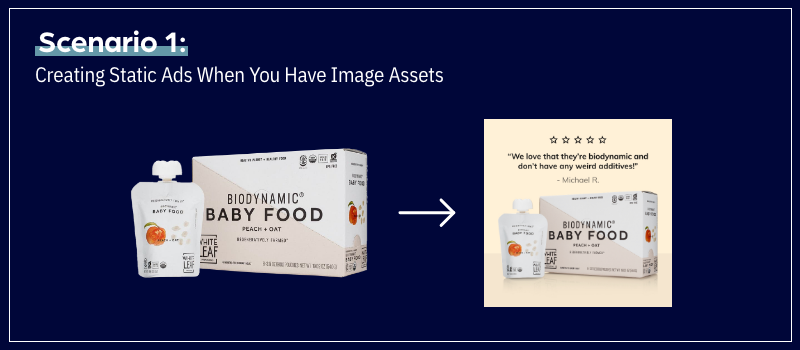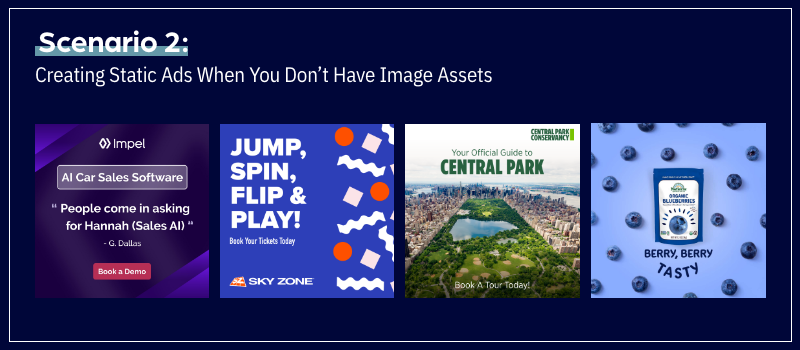Connor DeBruin, Senior Performance Creative Strategist at Acadia.
Content is king, and new creative gets attention that’s easily lost and hard won. But it’s also expensive, time consuming and difficult to do well on a tight budget and short time frame. What can brands do to keep content fresh when the common refrain is that creative can’t just be recycled from platform to platform?
They should shop their closet – that is, remix existing content from their asset library in a way that makes it feel new again, without actually spending on a big brand new photoshoot.
Any budget-savvy consumer knows that repurposing pieces they already have at home is a great way to save a few extra dollars rather than buying something brand new. The same can go for content. The key to reusing content is to find a new angle for the concept so it feels new and different from its predecessor. Brands often tell us they’re bored of using their existing creative – which is understandable after they’ve seen the same videos and images over and over. But if you take a step back, you’ll remember that the end consumer of the creative has not spent nearly as much time with the content as you have, and with a little design and editing TLC, the new content can take up its own identity.
Brands with small asset libraries and small budgets fret not. Refreshing existing content can be done to make paid social creatives, PDP creative, display ads and video ads and the savings are significant. Recently, a client came to us with a big plan to advertise across Google, Facebook and programmatic platforms. A photoshoot would have cost upwards of $30,000 to account for all of the different ad placements. Instead, we proposed using existing assets by drawing from what was already up on the website, creating video ads from photos and videos already at our disposal, and supplementing them with audio and asset libraries that our team uses for clients in a pinch. The end result was a brand new set of creative – but at a fraction of the cost and built much faster. Both the client and our performance creative team were happy, and an additional budget was able to be put towards the ad spend for the new ads!
The first step is to determine what you need, what you already have, and how to make the best use of both to get the desired result without digging too deep into the wallet. Here are five scenarios in which we’ve helped clients shop their existing creative asset library, and how it was possible.

Scenario 1: Creating static ads when you have image assets
Good news: This is easy. If you have image assets at hand, you can easily create static ads. Some common types of static ads that work great are review-based ads, ads promoting specific product features, standalone product photos featuring the brand logo, before and after images, and product benefit. Simply take the image or images and add the copy that you need to sell it, whether that’s a quote from a review or a list of product benefits. Boom. You’ve got a brand new ad.

Scenario 2: Creating static ads when you don’t have image assets
This is more of a challenge, but there are ways to go about creating new static ads even without a set of images. We’ll start by asking ourselves: Are we creating an ad for a product that has a PDP (product detail page) online that we can pull images from? If yes, we’re on our way. Simply download the product image from the website and you now have image assets! From that point, we’ll revert back to scenario 1 in order to jazz up the product images with some graphic design tlc to make an eye-catching ad.
If the client doesn’t have product images online for us to pull from because they are selling a service instead of a product, then there’s an alternative. We work with these types of clients often. Step one is to do some research. How are competitors selling the same service? What’s working elsewhere? If you’re selling a cleaning service, for instance, we can utilize stock image libraries to pull photos of a cleaning crew at work. Just make sure it feels natural and not forced, and stock assets can quickly and easily come to the rescue. If there’s no images of a service being performed that would be relevant for the ad, that’s where copy comes in. Who says your ad has to be a photo or illustration? Let’s whip some clever copy to design in our ad visual! Brownie points if you utilize AI to brainstorm your headlines!
Scenario 3: Creating video ads when you have video assets
More good news: this one’s not too difficult to accomplish, especially if you have some video editing skills. The first step is to examine the video assets you have to work with. In some cases you may already have a great video that just needs to be trimmed up to be optimized for your ad platform, in other cases creating a video ad may involve cutting up parts of different videos to create a cohesive ad. While this will involve some video editing, this is still a breeze compared to reshooting.
The key to building great video ads using existing content is to reimagine the video content in a new setting. Recently, our ad team created a social video ad for a client that had tons of UGC (user generated content) videos. We stitched together multiple UGC videos to create a paid social ad to create buzz around their service. The UGC, good on its own, became even more powerful when turned into a highlight reel of real fans loving the product.
Scenario 4: Creating video ads when you don’t have video assets
Need a video but don’t have any existing video footage to use? This isn’t nearly as impossible as it sounds. A big secret that not many discuss is that we can actually create compelling video ads using images! In order for this to truly be a success, it’s important to tell a story through your video using copy.
One brand we recently worked with was able to repurpose existing client image assets that had been used across a lot of different channels in order to create a brand-new video with all-new messaging that looks and feels different from everything they’ve done previously. Consider it video magic.
Scenario 5: Creating new PDP creatives
We frequently hear from brands that their product-detail pages aren’t as great as they could be. That’s a big miss – customers use these images as reference points at a critical moment in the funnel when they’re deciding whether or not they want to make a purchase, and a lack of detail, angles or interesting imagery could ultimately lead to them dropping off. Don’t let that happen!
Product pages should include product benefits, reviews, infographics, how-to imagery and comparisons in order to make the most of the moment. We can use existing product images, preferably with different angles or perspectives of the product, and overlay text to bring a whole new meaning to the image. The asset lift is light, but the benefits are massive.
These are far from the only scenarios in which a brand needs new creative but thinks they lack the assets or budget to make it. Photo and video shoots have their time and place, but sometimes we have to get our hands dirty and work with what we’ve got. The next time you’re working on a project with limited resources, remember: a lot is possible by reusing existing assets. Our performance creative team is well-versed with working with clients who need to maximize their creative efforts with minimal assets and would love to help. Contact us here.
Acadia also works with brands on photo and video shoots, in instances where new original assets really make sense. The purpose of this post is to share an alternative solution for brands to stretch their past investments a little further.
